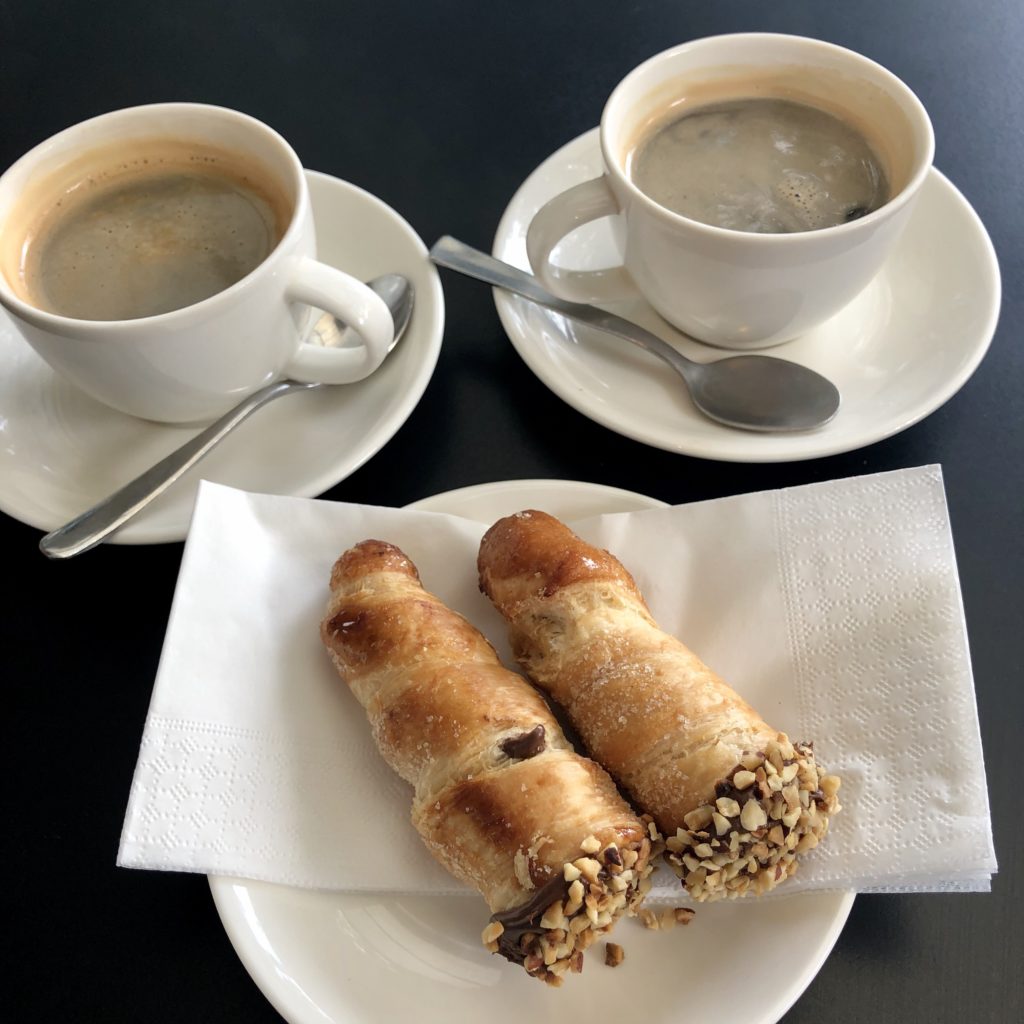 I begin my day with a cup of coffee. I’ve been doing so for decades. Over the years, I’ve had it boiled, dripped, pressed, and expressed. I’ve had Cafe au Lait, New Orleans Chicory Coffee, Swedish Egg style, Turkish with cardamom, Cowboy style in an enamel pot, Italian in a tiny cup, and most recently Costa Rican brewed with a Chorreador.
I begin my day with a cup of coffee. I’ve been doing so for decades. Over the years, I’ve had it boiled, dripped, pressed, and expressed. I’ve had Cafe au Lait, New Orleans Chicory Coffee, Swedish Egg style, Turkish with cardamom, Cowboy style in an enamel pot, Italian in a tiny cup, and most recently Costa Rican brewed with a Chorreador.
My morning coffee comes so easily, in my kitchen I press a button, and the machine grinds a measure of beans to brew just enough to fill my cup. I want, and I need two cups each morning to begin my day. After my recent travels in Costa Rica, I am savoring it more as I realize what is involved in getting the coffee into my cup.
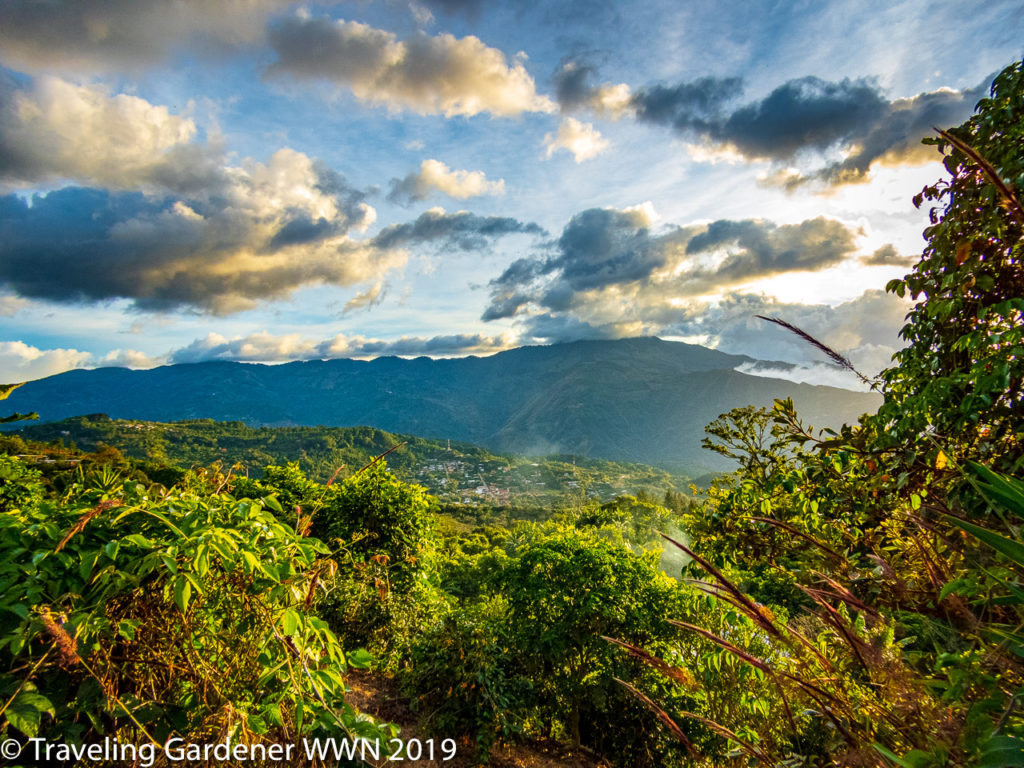
Each year the US imports 1.75 million metric tons, around 5.74 billion dollars’ worth of coffee, nearly half of it from Brazil and Columbia. (USDA) Hawaii has the climate to grow the famous Kona coffee, and a few farmers in southern California are growing coffee plants. But this small, quantity grown in the US is nowhere near enough to supply the US addiction to coffee. We are dependent on imports to satisfy our caffeine habit.
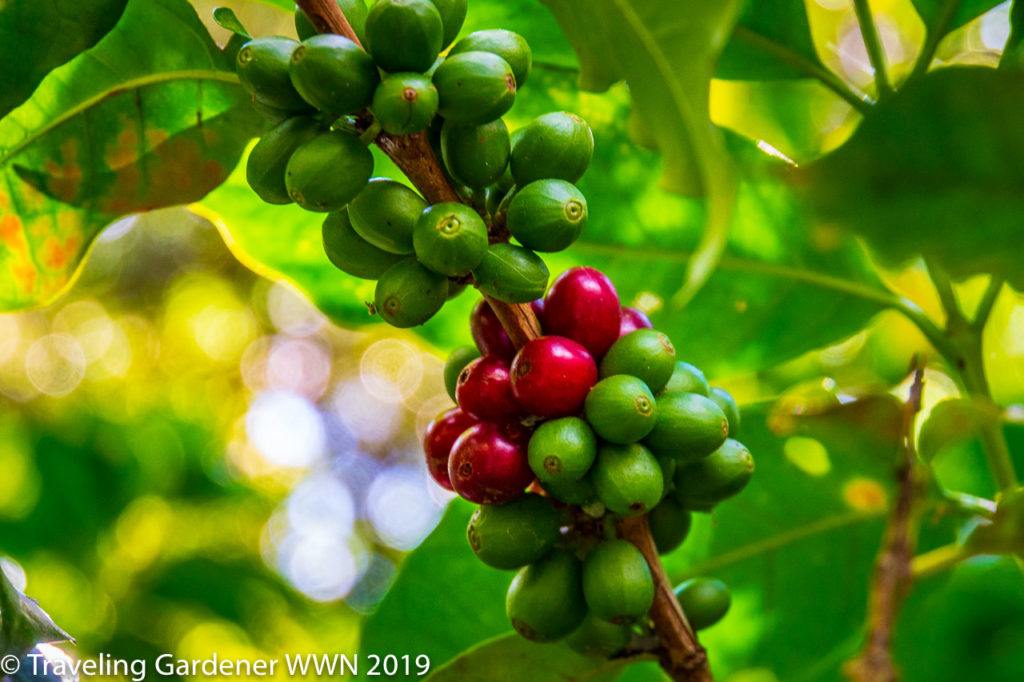
Coffee grows from a bean. Germination of the seed takes 75 days! I get impatient with a zinnia seed taking five days to poke its little sprout above the ground! The coffee plant, which grows like a small tree, requires about four years before it begins producing a viable crop. Coffee plants need a warm, moist tropical climate, with filtered shade. The geographical belt for coffee production includes Brazil, Ethiopia, Kenya, Vietnam, Mexico, Puerto Rico, Guatemala, Columbia, Costa Rica, and Hawaii. The tropical mountainsides of Costa Rica located so close to the Equator provide ideal growing conditions.
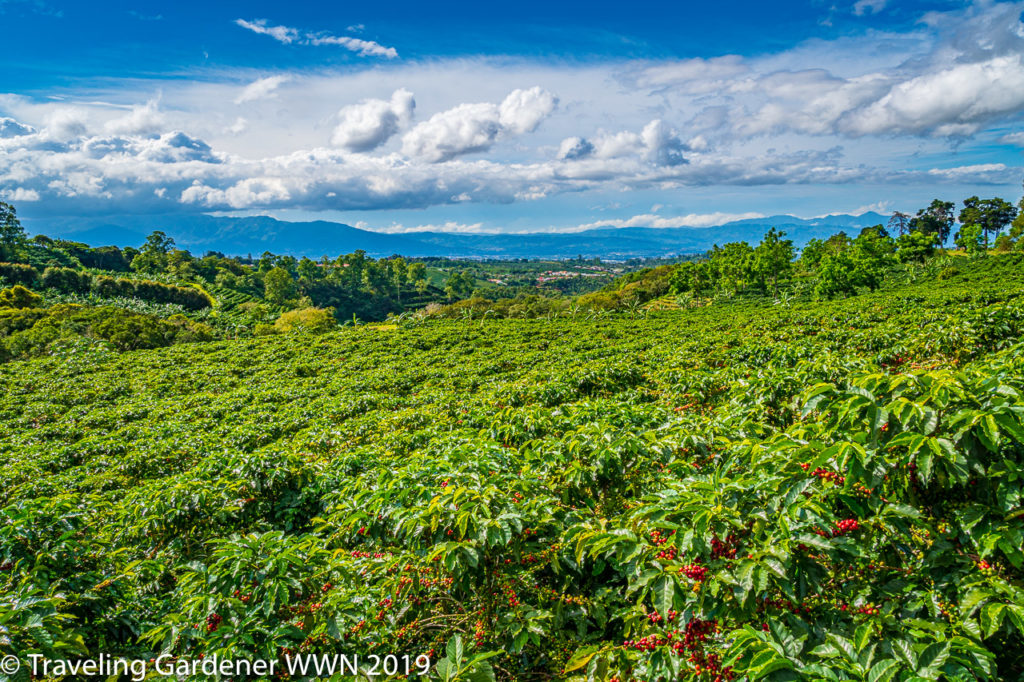
The image of all these plants growing on the rugged hillsides with the red berries ripening is breathtakingly beautiful. The reality is incredibly difficult. Since coffee plants prefer filtered sunlight they are often grown under banana trees. If coffee plants get blight or rust, the plant must be destroyed to avoid infecting neighboring plants. The coffee cherries require six to seven months to grow from flower to ripened and ready for harvesting. For comparison, a crop of sweet red cherries ripens from blossom to fruit in two-three months. Growing coffee is a long agricultural commitment.
Harvesting
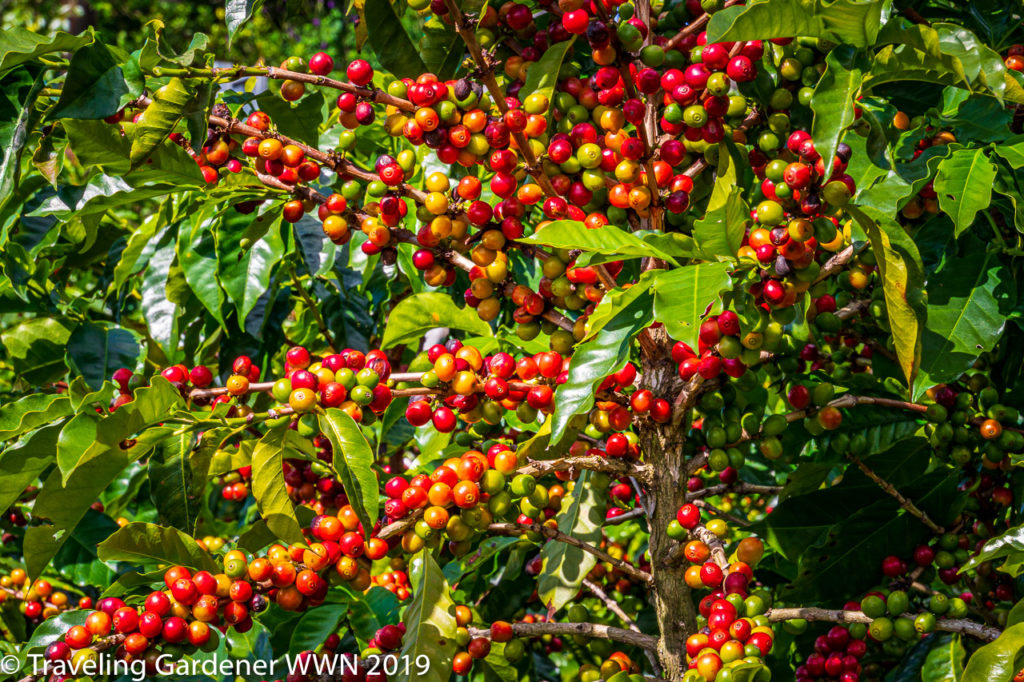 There are two methods of picking coffee: strip picking and selective picking.
There are two methods of picking coffee: strip picking and selective picking.
Where the fields are flat like in Brazil, strip picking is done with a mechanized picker and all the beans, regardless of ripeness, are pulled from the plant in one harvest. The cherries are run through a demucilager stripping the coffee cherry skin and pulp away from the bean. The “American Blend” coffee is generally sourced by this method.
The very best coffee, Arabica, which Costa Rica prides itself on, is selectively picked, and the beans or coffee cherries are harvested by hand at the peak of ripeness.
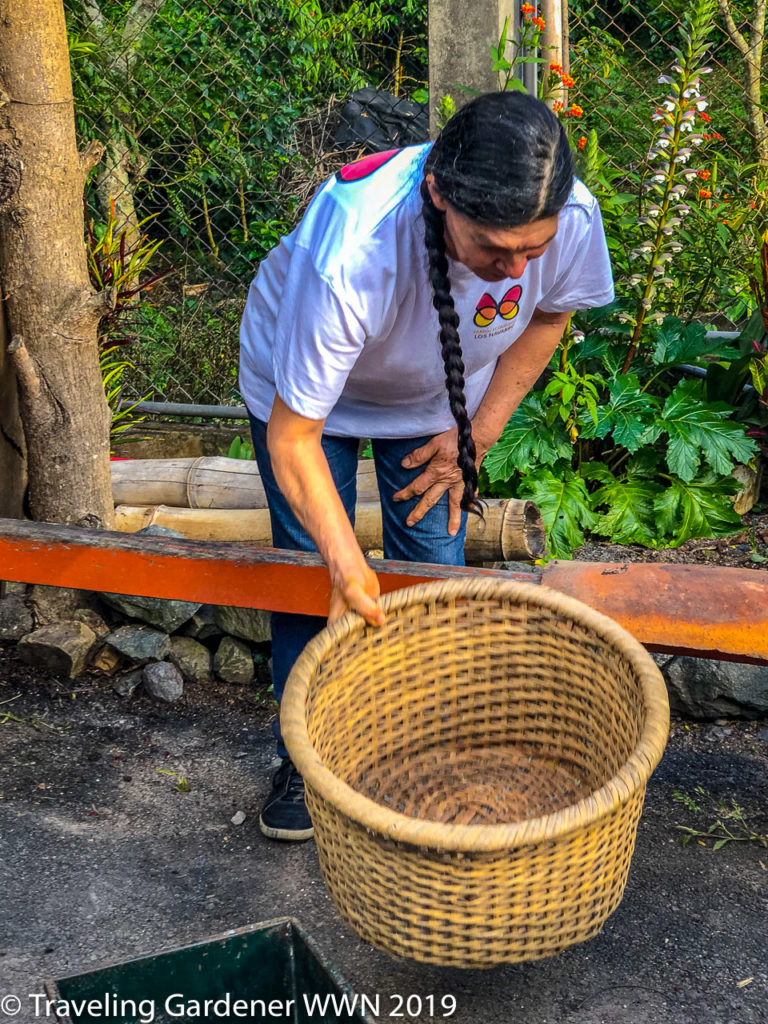
Seasonal workers called pickers fill a basket with the fully ripe, red coffee cherries. The pickers carry a basket strapped to their body, which will hold about 18 quarts of coffee beans. Imagine what this weighs, a prepackaged bag of seedless grapes which are about the same size as coffee cherries, weighs in at two pounds and would equal about two quarts in volume.
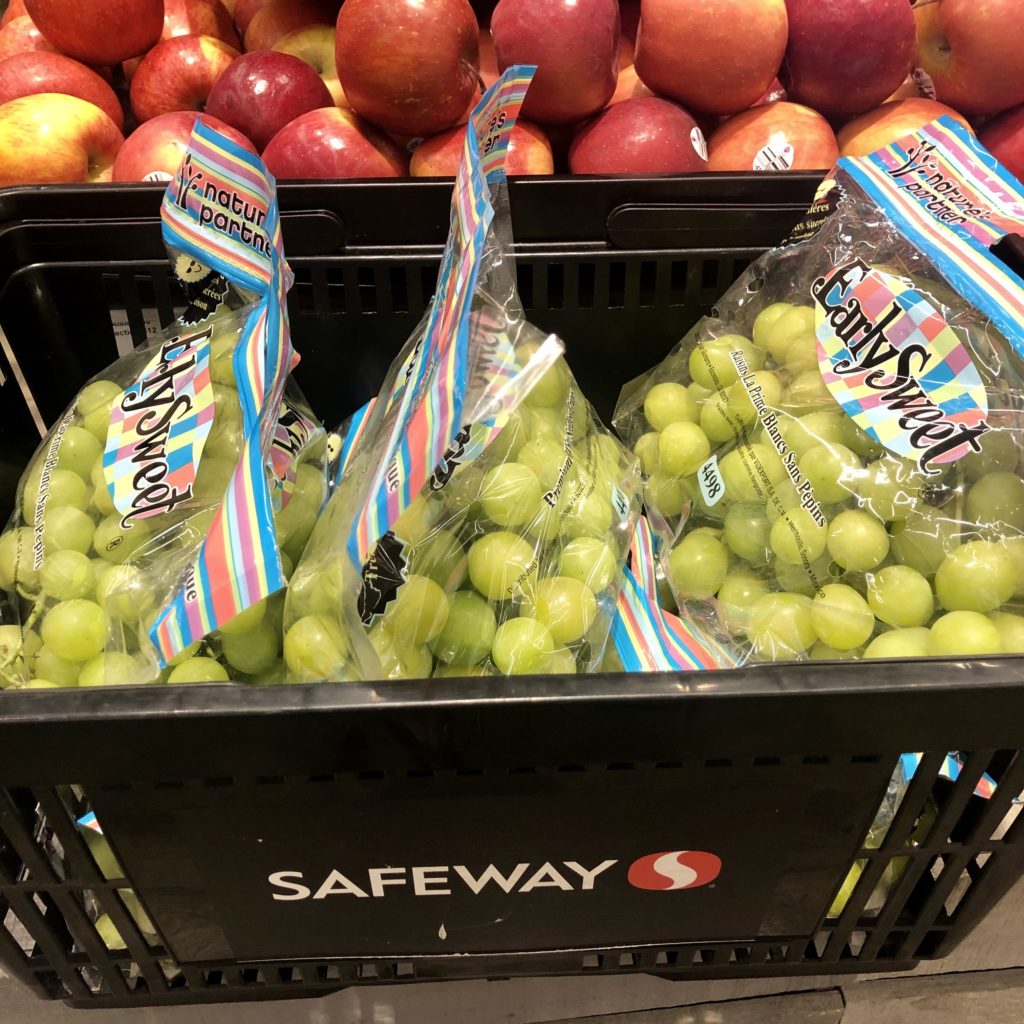
I packed six bags into the plastic grocery basket, and it was heavy. It would require 9 bags of grapes or 18 lbs. in weight to equal what the pickers carry. I saw the pickers at work on the steep sides of mountains; some carrying their babies on their back; others have small children with them as they work.
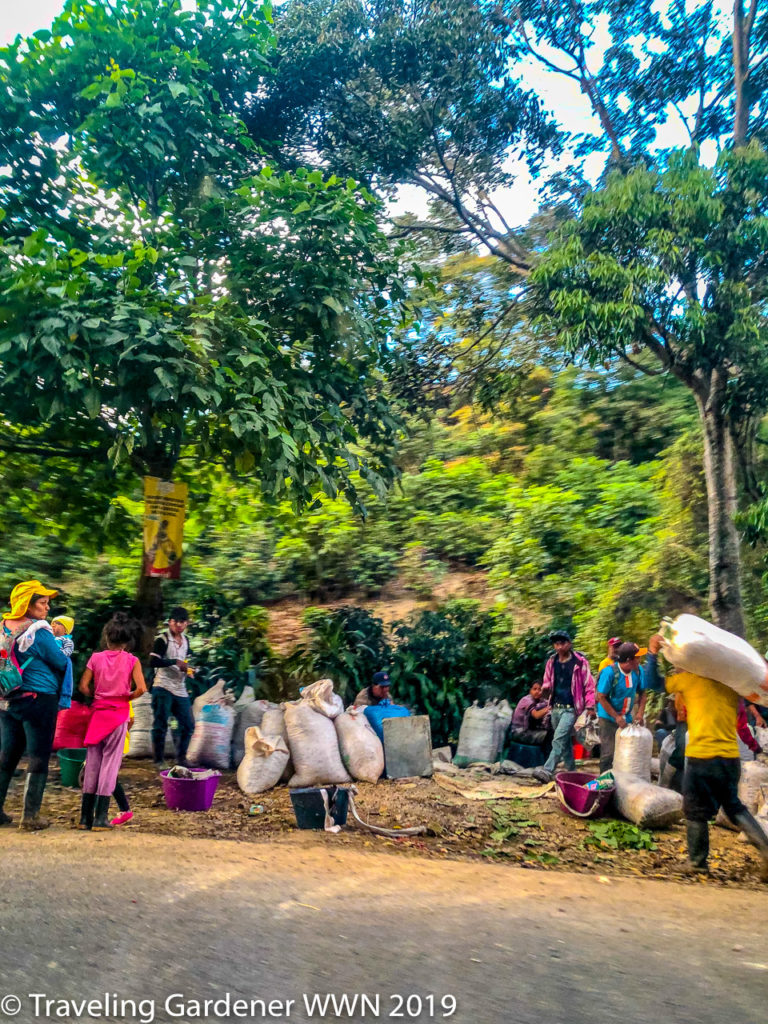
The fastest pickers make the most money, and an experienced picker can pick ten baskets a day. They spill their baskets onto the ground to clean and sort the beans, then fill a jute bag and load onto a truck. This is tricky, repetitive, and dangerous work. The payment per basket $1.50 -$2:00 US, has been stagnant for ten years.
Transporting
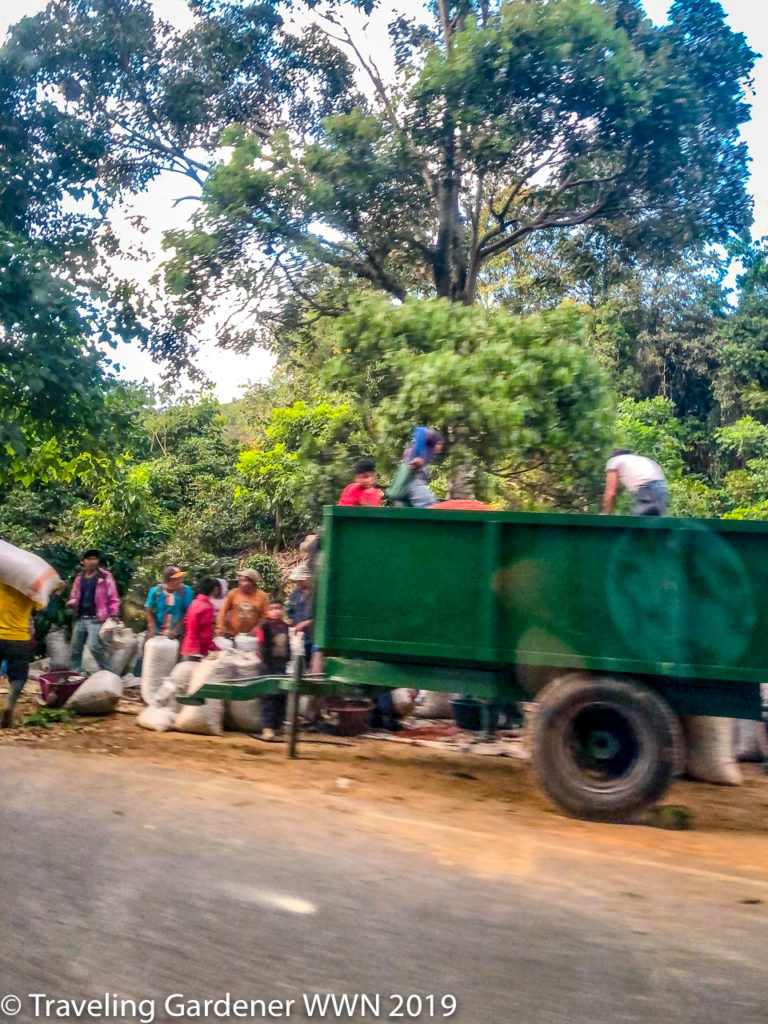 The truck filled with sacks of coffee cherries drives narrow winding mountain roads back to the coffee processing site, navigating long distances back and forth all through the day. The colorful ox carts seen in Costa Rica were once used to transport the beans.
The truck filled with sacks of coffee cherries drives narrow winding mountain roads back to the coffee processing site, navigating long distances back and forth all through the day. The colorful ox carts seen in Costa Rica were once used to transport the beans.
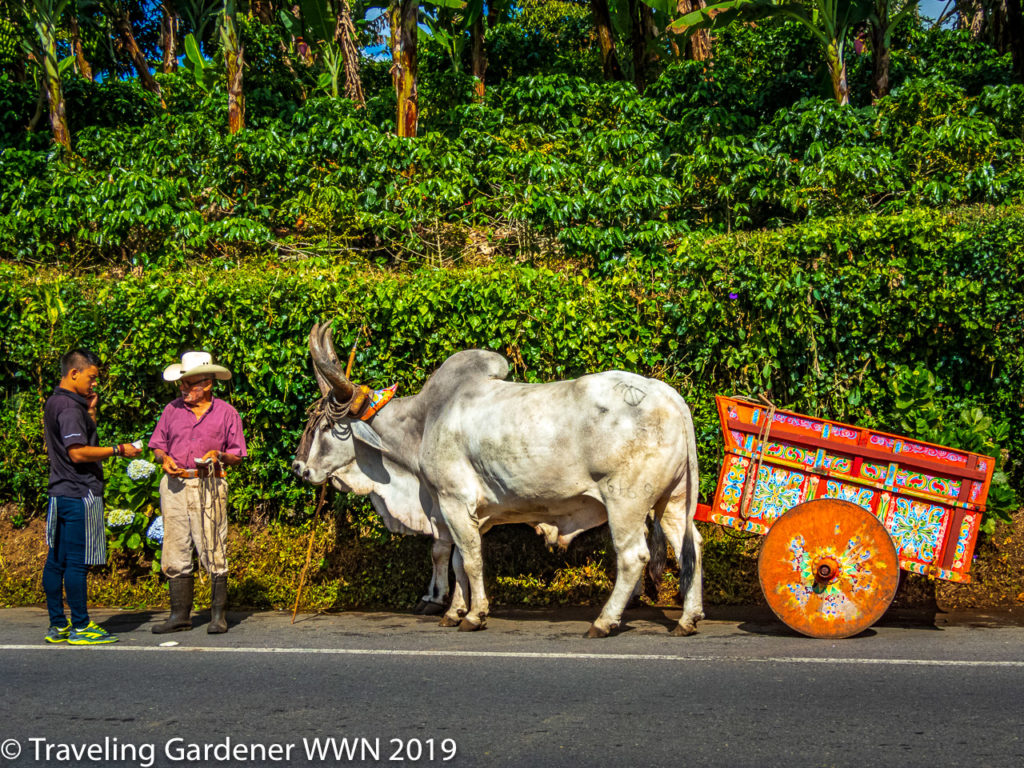
Processing
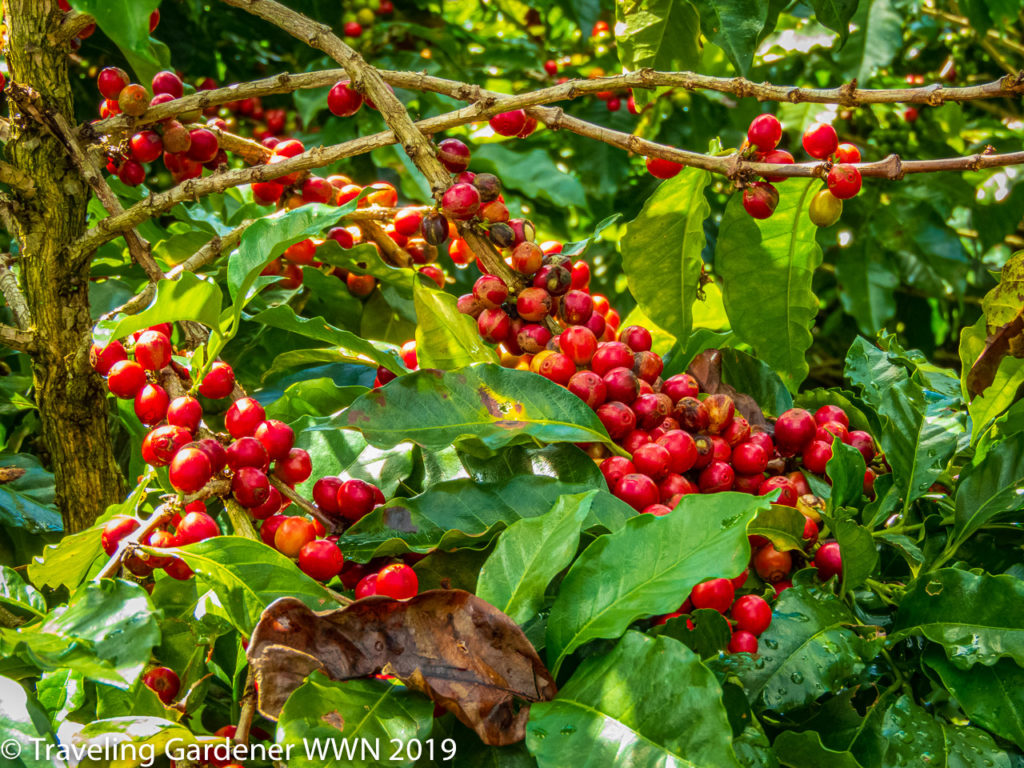
Since the coffee cherry is fresh fruit, things move quickly. Each coffee cherry usually has two seeds or beans. The fruits are washed and then spread out on long tables to dry in the sun. The cherries must be raked and turned throughout the day. The cherries are covered at night or during rain to keep them dry. The time required to dry the bean can take several weeks and continues until the moisture content measures 11%.
Milling
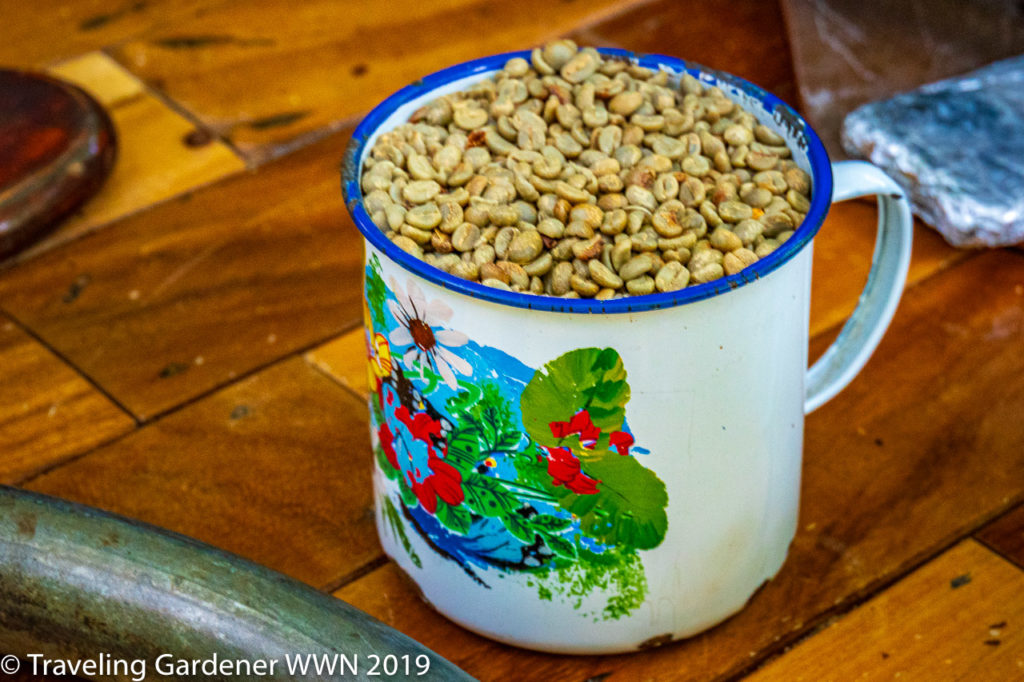
Each dried bean is milled to remove a papery hull before they are graded and sorted by size. The beans are now green coffee and bagged in jute sacks ready for export in shipping containers.
Roasting
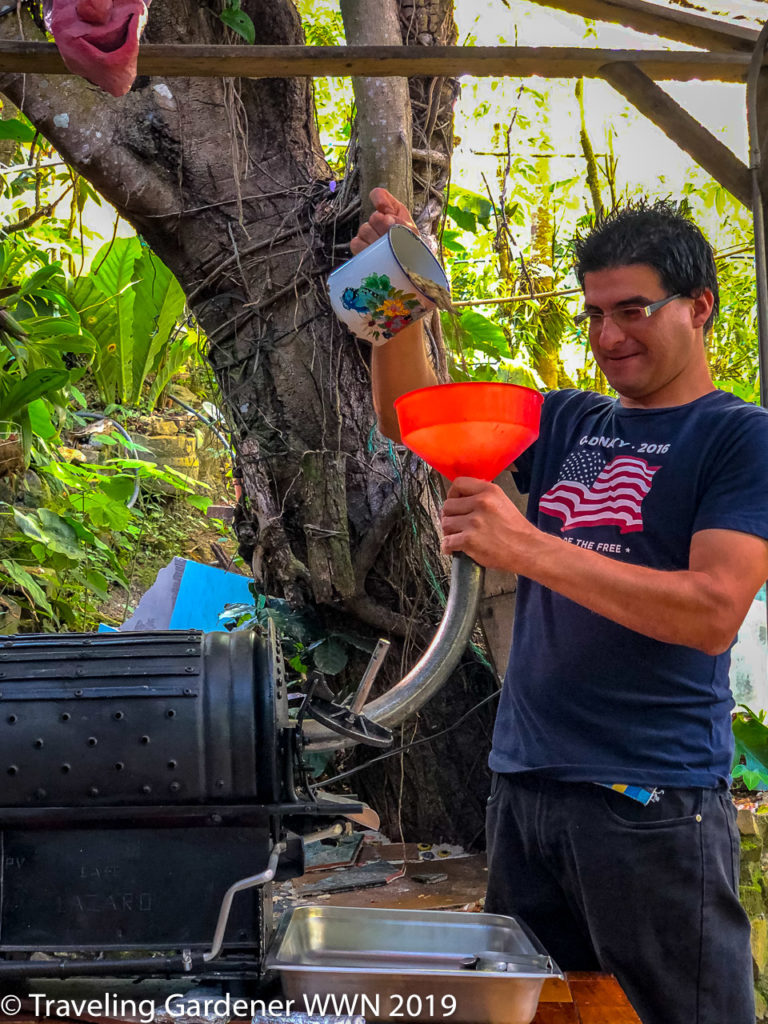
Beans are blended to achieve the desired flavor profile, and there is an “American Blend” set for the masses of coffee drinkers in the US. International coffee drinkers are rarely impressed with the American Style coffee. Boutique coffee roasting is carefully blended and ground just before brewing to preserve the very best flavor. Coffee blenders are equal to wine vintners in determining the best taste of their products.
Drinking
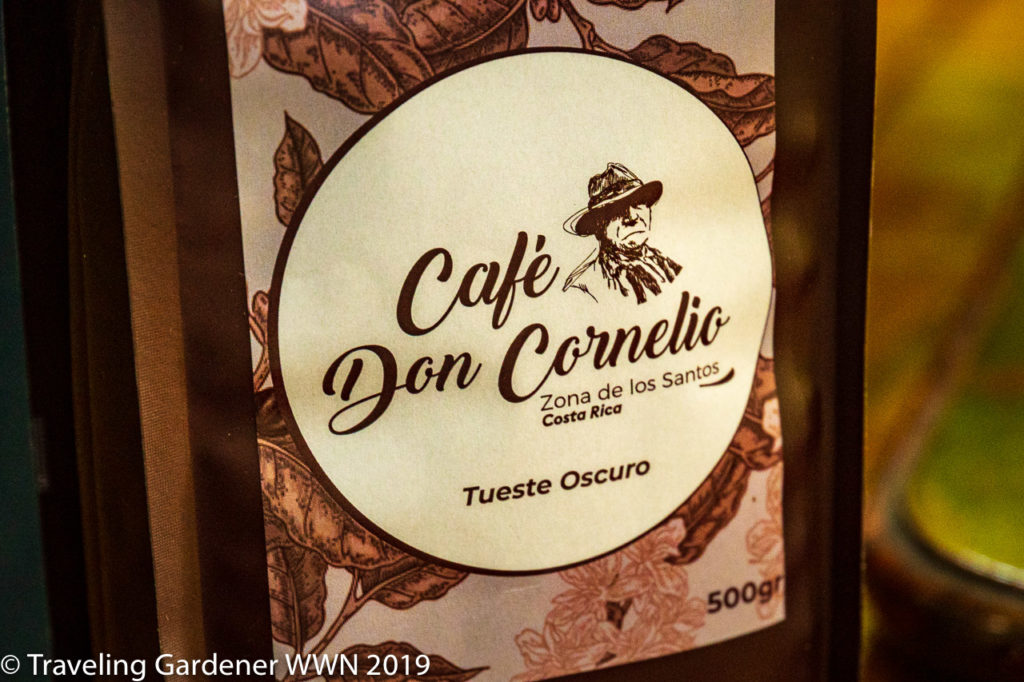
Since I have been learning more about the coffee growing process, I’m checking the bags for sourcing of the beans, and in the American blends found on local grocery shelves, it is the roaster/brand that takes first billing. The source of the beans is rarely identified except in more expensive markets and coffee shops. It takes about 70 coffee beans or 38 coffee cherries to make a cup of coffee. You could count out 38 green grapes to get a sense of how many handpicked coffee cherries this would require.
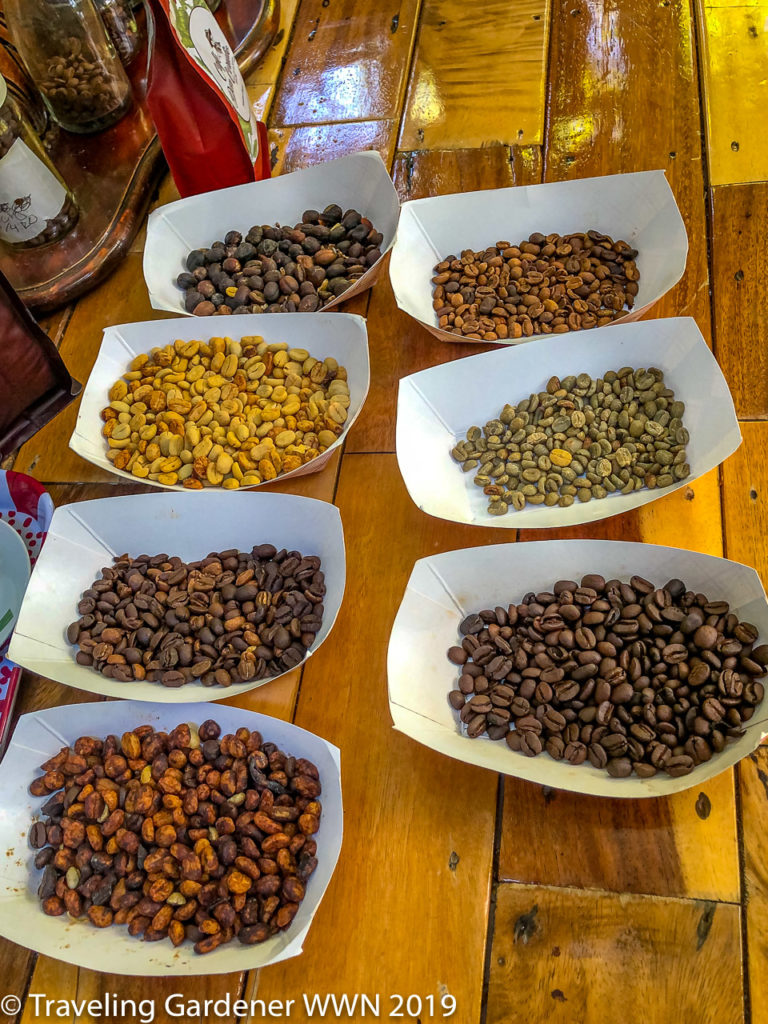
I visited Navarro Coffee growers in Costa Rica. Our guide told us we would see the plants and have some coffee. We’d driven a couple hours before we arrived, so I was ready for a cup in a typical quick coffee mindset. Navarro’s is a small coffee plantation where Grace Navarro grows the coffee plants on a steep hillside and hires laborers to pick the cherries just at the peak of ripeness. Cherries continue to ripen for weeks and pickers return for several harvests. Once picked, the cherries must then be carefully dried. The beans are roasted on-site in small batches.
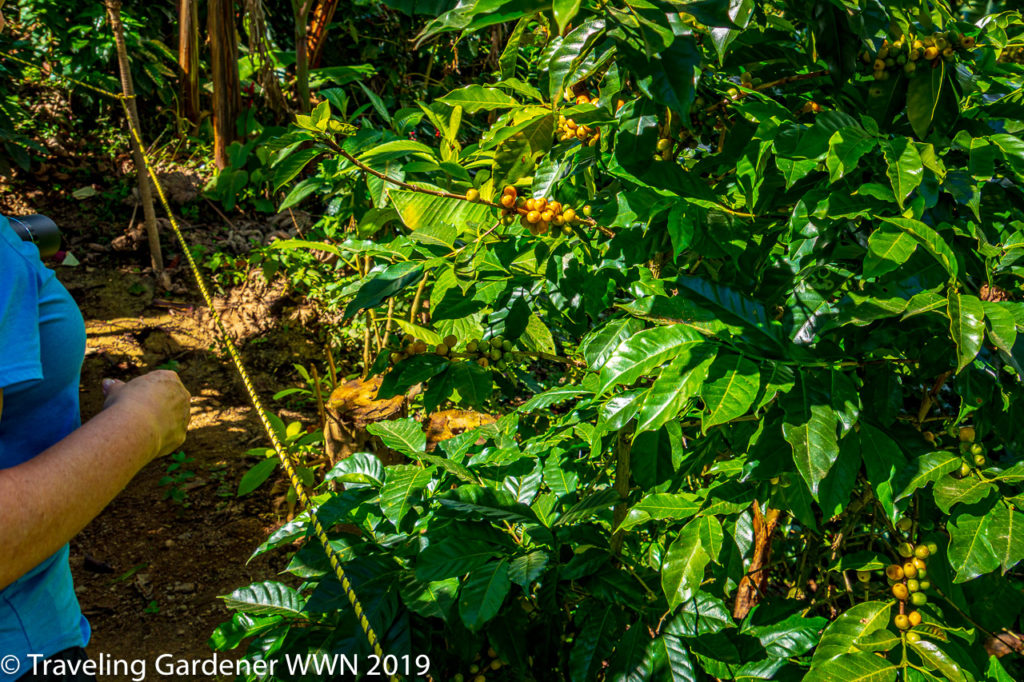 We toured the coffee-growing areas, the butterfly gardens, the fruit orchard. We saw the beans placed in the roaster,
We toured the coffee-growing areas, the butterfly gardens, the fruit orchard. We saw the beans placed in the roaster,
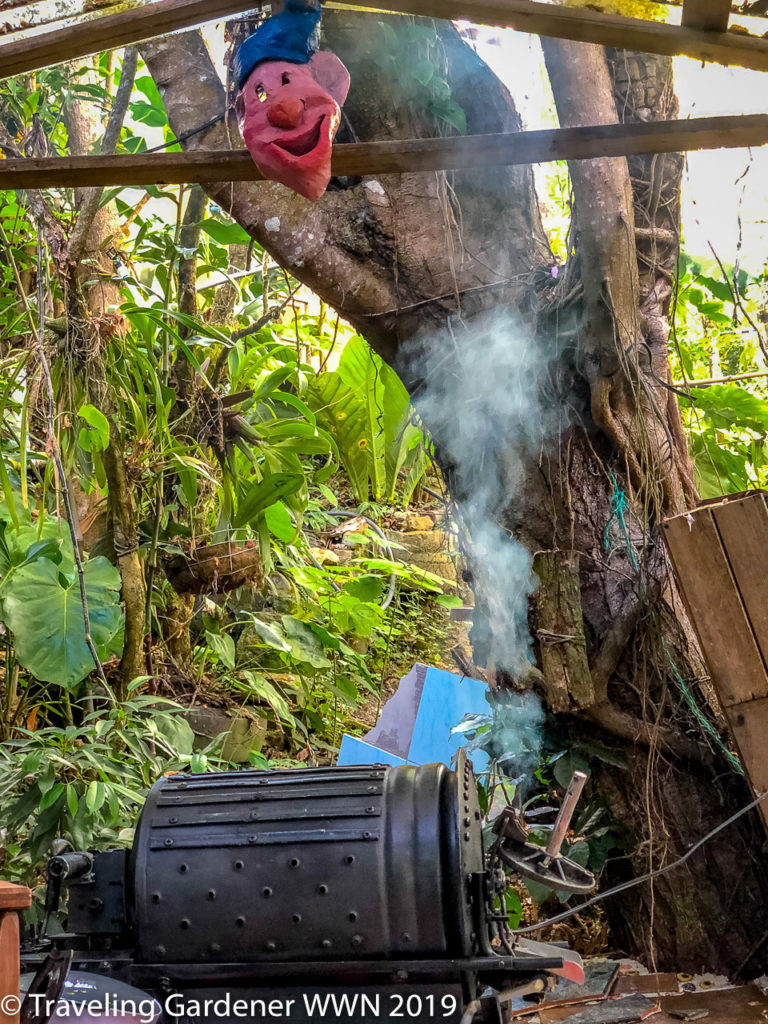
we smelled the roasting beans, watched as they were tipped out of the roaster into a large stainless steel tray where Grace shook them back and forth to cool. It takes over an hour for the beans to cool completely.
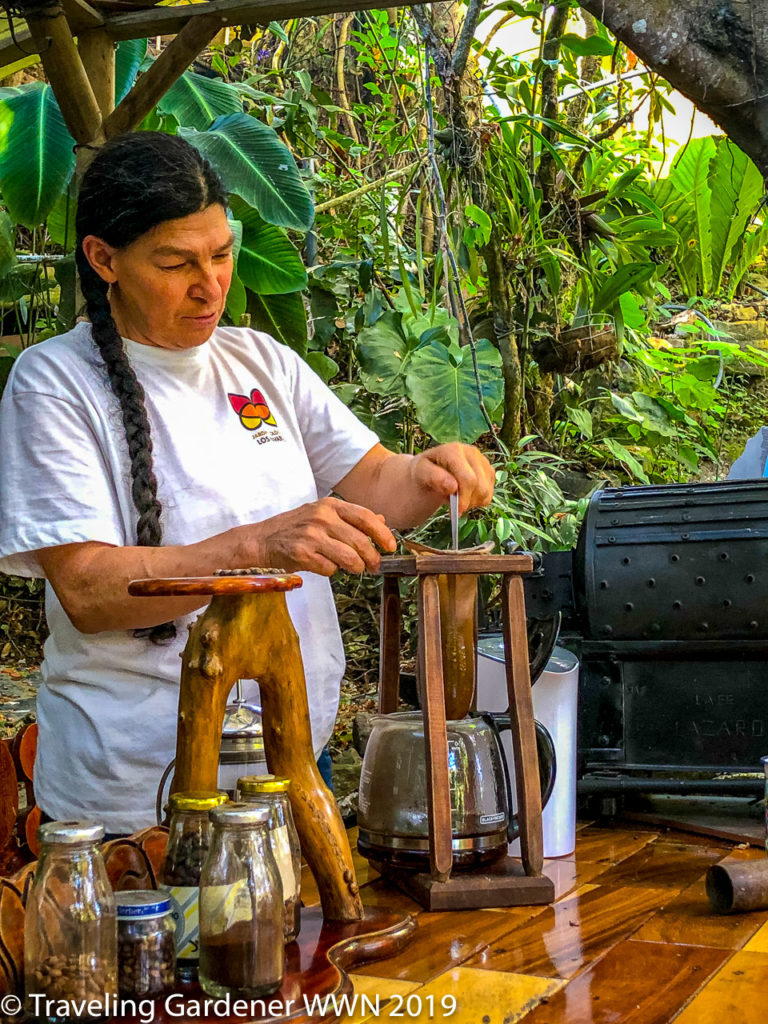
Grace makes her coffee using the Chorreador, the ground coffee is spooned into a long thin fabric sack held in a wooden frame, and hot water is poured slowly over the grounds. Three hours after we arrived, we had our coffee. A good cup of coffee is a true pleasure. 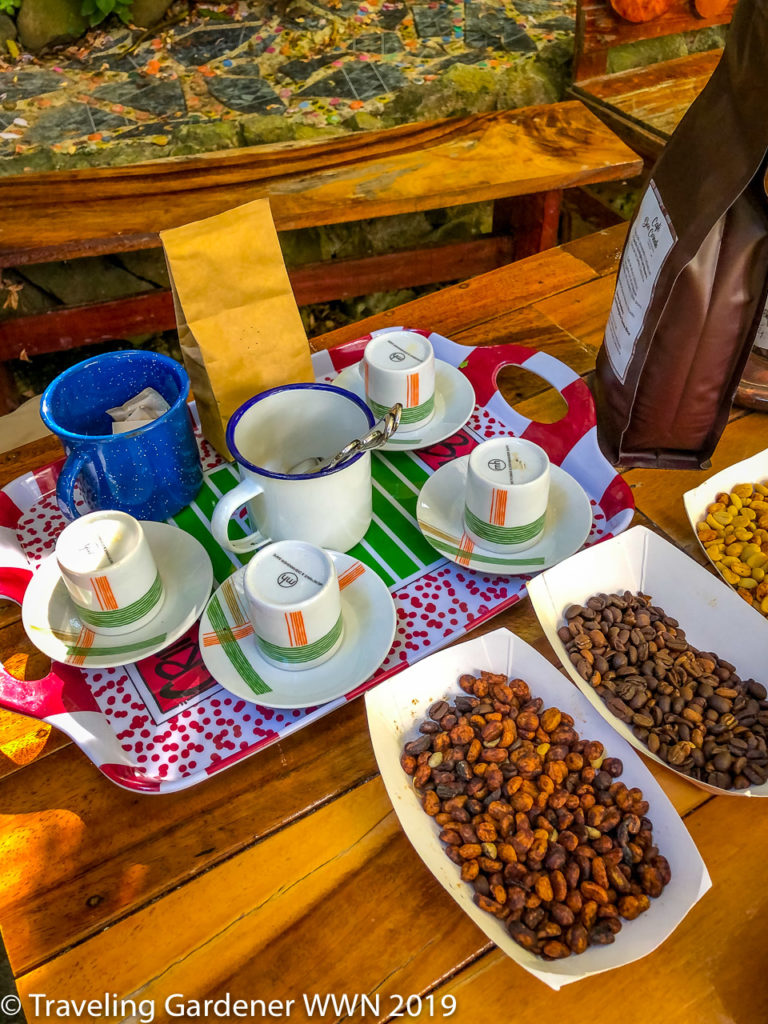
The US is a big country with a deep thirst for morning coffee. We need our global trading partners to satisfy this thirst. There are some attempts to create a synthetic coffee, really creating a vehicle for the caffeine jolt most coffee drinkers desire. But we need coffee farmers. Climate change is a severe threat to our coffee habit. Entire crops of coffee cherries can be wiped out by heavy rain and a mud slide can wipe out acres of plants. Coffee travels a long and tenuous journey to reach my kitchen. My coffee, rich and hot, still appears with the push of a button. A good cup of coffee is a gift from many hands.
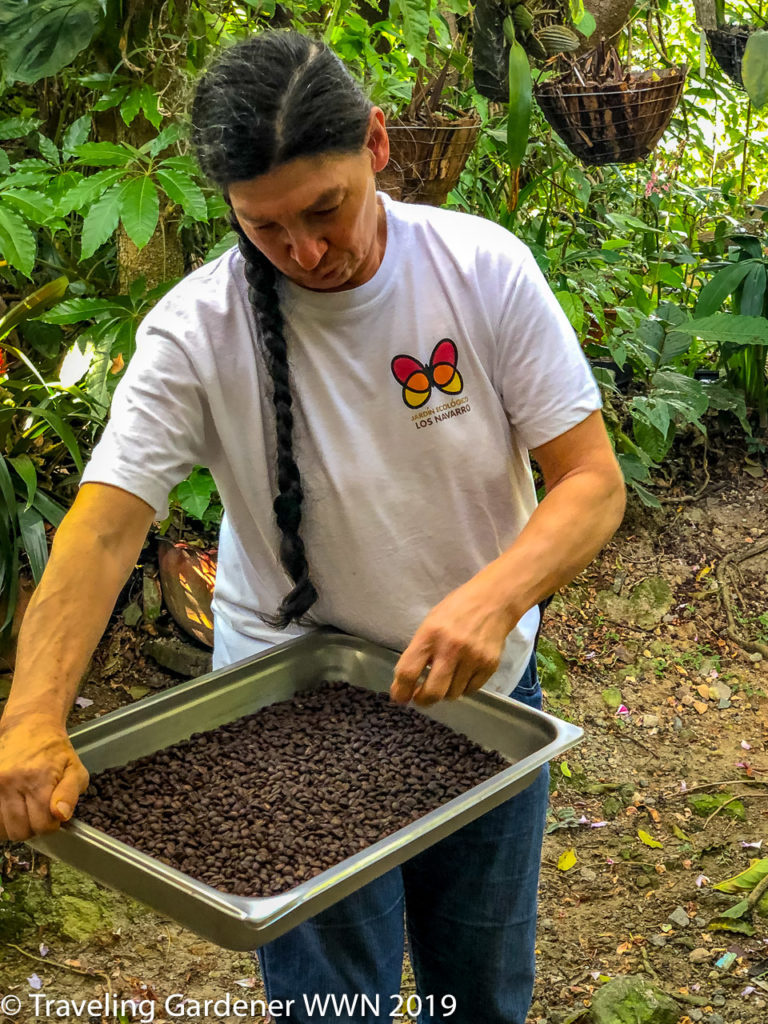
Sources:
Your Coffee Is From Where? California? Stephanie Strom, New York TimesMay 26, 2017
Coffee: World Markets and Trade United States Department of Agriculture, Foreign Agricultural Service, December 2019
Caffeine: How Caffeine Created the Modern World, by Michael Pollan
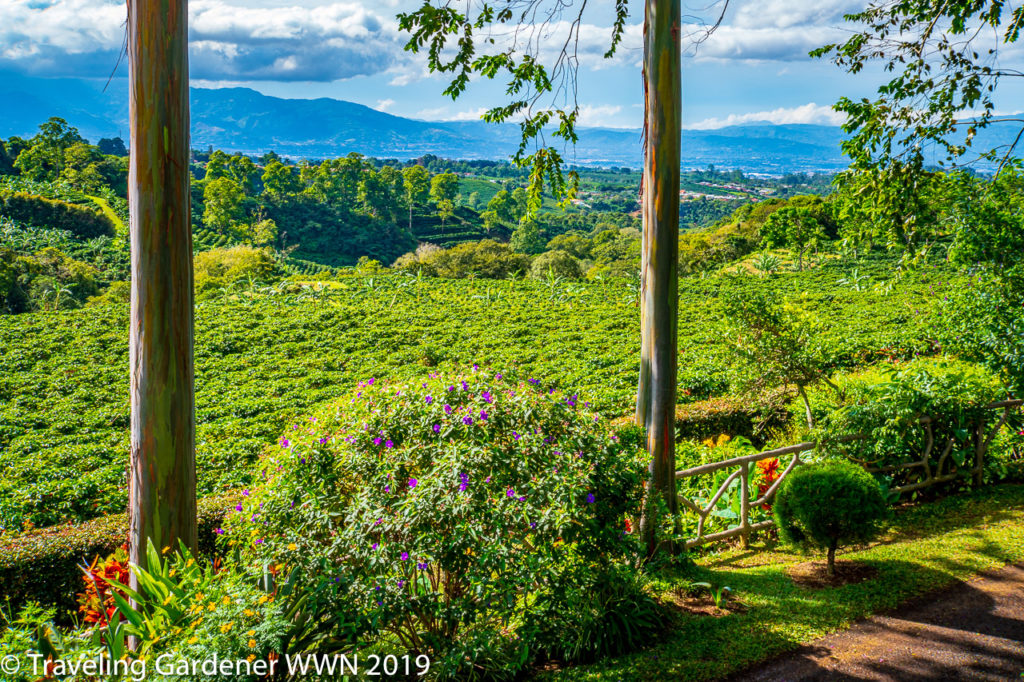
A thought: It doesn’t really make sense for our government to continue to insult the countries who provide us food products we cannot grow in the US. Seasonal migrant workers move throughout the world harvesting coffee.  They live in close quarters, travel to and from the crop in the backs of trucks and work side by side on the hillsides. They too, are worried about contracting a deadly virus. Everyone has a part in making our world more inclusive and delicious.
They live in close quarters, travel to and from the crop in the backs of trucks and work side by side on the hillsides. They too, are worried about contracting a deadly virus. Everyone has a part in making our world more inclusive and delicious.
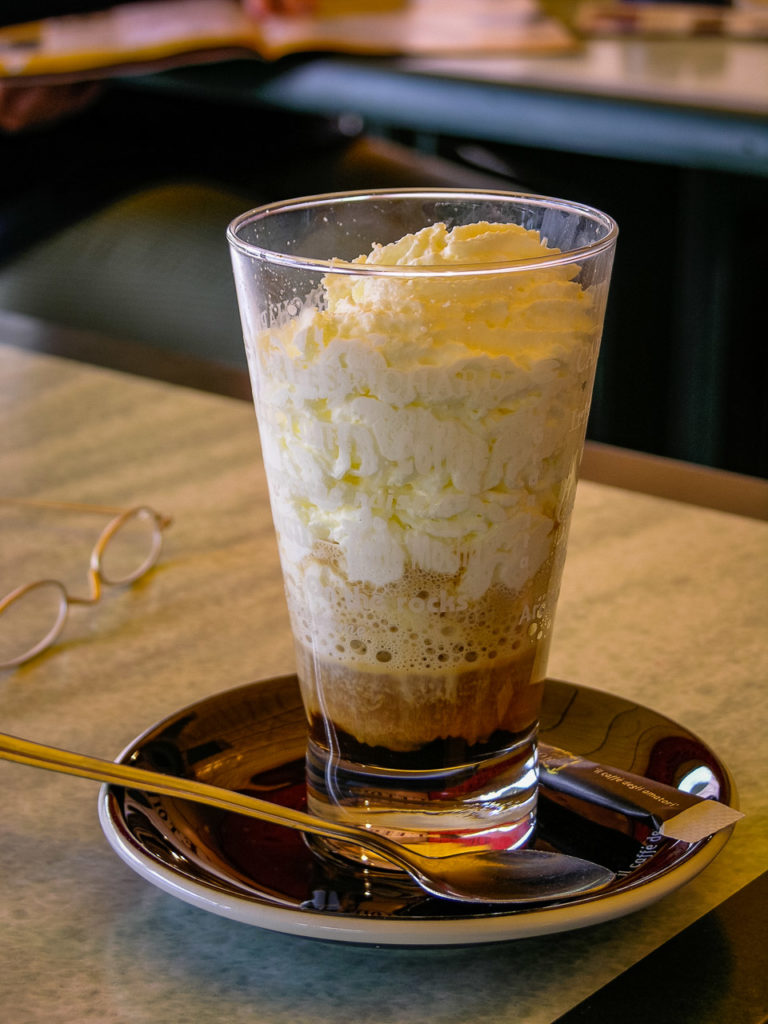
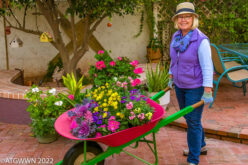
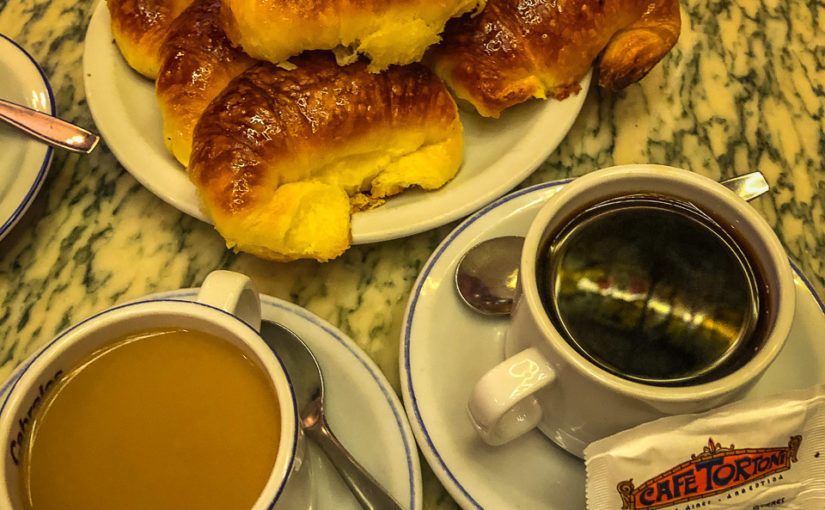
Thanx for an enlightening story! Hope all is well! SML
I was amazed at all there is involved.
Made me want a cup too.
Hope it was a good one,
A fascinating story with great photos. Thanks!
Thanks, Curtis, are you a coffee drinker?
A fascinating look at the background of the coffee I had taken for granted. But thank to you, I have a deeper appreciation for what happens first.
It is quite a journey isn’t it!
Great story about one of my favorite things! Coffee! It is a labor of love by so many unknown hands. Thanks for compiling so much information about coffee.
Thanks for reading along, hope you had coffee!
A wonderful article. Very informative. Photos were great.